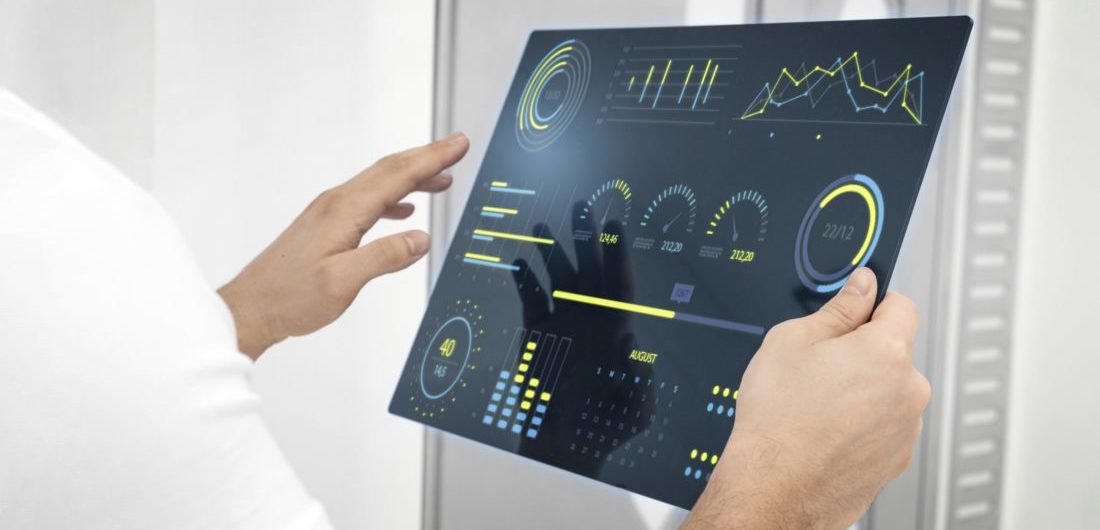
M&E Journal: Become Agile with Intelligent Test Automation
As a society, we’ve long sought ways to reduce our workload and gain more leisure time. In the past, we imagined that robots would do our work for us, freeing us from the burden of labor.
While this vision remains elusive, the development of automation during the industrial revolution paved the way for what would eventually become artificial intelligence (AI).
By combining automation and AI, we’ve been able to optimize processes and achieve new levels of efficiency. However, this is only the beginning. With the emergence of virtualization, we can take automation to new heights. Virtualization represents a turning point in the future of automation, where the convergence of automation and AI reaches its highest peak.
We can now create virtual versions of hardware of software, and even virtualize processes themselves.
 This allows us to simulate, test, and optimize processes in a virtual environment before implementing them in the real world.
This allows us to simulate, test, and optimize processes in a virtual environment before implementing them in the real world.
As a result, we can reduce the potential for errors while improving performance.
In the past decade, IT companies delivering services in the media and entertainment industry have been competing to develop solutions that address the latest trends in the market.
In this short read, we will explore how Softtek has embraced AI and automation to innovate virtual solutions in the QA space that change the game for testers and help organizations keep up with evolving market demands.
AGILE METHODOLOGY AND AUTOMATION: THE PERFECT SYNERGY FOR QA
To keep up with the constantly evolving media industry and support the rapid creation of new communication channels that lead to new revenue streams, IT companies have adopted Agile methodology. Agile involves breaking up projects into several phases and collaborating closely with stakeholders to deliver more functionality, more quickly, to end users.
While manual testing is still a crucial part of the QA process the growing need for speed in the QA phase has led to the adoption of Agile in QA as well.
Agile has set a new standard for user experience, but it has also introduced significant challenges for QA engineers.
In this fast-paced environment, sprints can last as little as two weeks, and QA engineers must ensure that not only does new functionality work, but also that previous functionality has not been impacted by new launches.
How can they balance the manual tasks and tight deadlines, increase their productivity and efficiency, and open opportunities to provide value beyond their day-to-day work? Automation is the answer that comes to mind.
MEETING THE DEMANDS FOR HIGHER QA VELOCITY
Despite advancements in technology since the 2000s, QA automation processes have not evolved much, with the main shift being from enterprise-level to open-source tools such as Selenium, which is widely used in API testing.
However, this shift alone is not sufficient to meet the growing demands for higher velocity and better results that enhance user experience.
To address this challenge, we developed FRIDA Intelligent Test Automation (ITA).
With ITA, QA engineers can simply type user requirements to a chatbot and let the entire testing process be handled through automation. Traditionally, a human verifies that those requirements are met, but with our platform, what used to take days is now down to minutes with no human supervision needed.
More time for leisure—or in the case of QA engineers, more time to focus on other key aspects of testing.
At a glance, FRIDA ITA takes a digital user story, identifies the different scenarios or branches that need to be analyzed to fully test the application’s functionality, and creates automated test scripts that can be executed in minutes.
 It supports web applications on any browser, APIs, and Android and iOS mobile applications.
It supports web applications on any browser, APIs, and Android and iOS mobile applications.
Our solution is focused on the lowest level of the automation pyramid, called “field level,” where production occurs.
By automating the testing process, our solution has been able to incorporate our test engineers into a tailored process that adjusts to the development team’s requirements, ultimately adding value to end users by getting products into end users’ hands more quickly with zero sacrifice to quality.
Our desktop version leverages AI and a machine learning algorithm to review not only desktop components but also analyze images. This allows us to build test cases from videos, screenshots, and mockups of the functionality.
Additionally, we can interface with popular DevOps and test management tools such as Jira, Jenkins, Zephyr, and Maven, which allows us to better serve our clients who may already have test or project management tools in place.
CONCLUSION
The emergence of virtualization and the ongoing evolution of automation and AI have opened new possibilities for optimizing processes and achieving higher levels of efficiency.
As the demand for speed and quality in the media and entertainment industry continues to grow, companies must find innovative ways to help their QA teams stay productive and deliver quality in this new and Agile environment.
* By Jorge Zarur, Business Development Manager, Media, Entertainment, Softtek *
=============================================
Click here to download the complete .PDF version of this article
Click here to download the entire Winter 2022 M&E Journal
